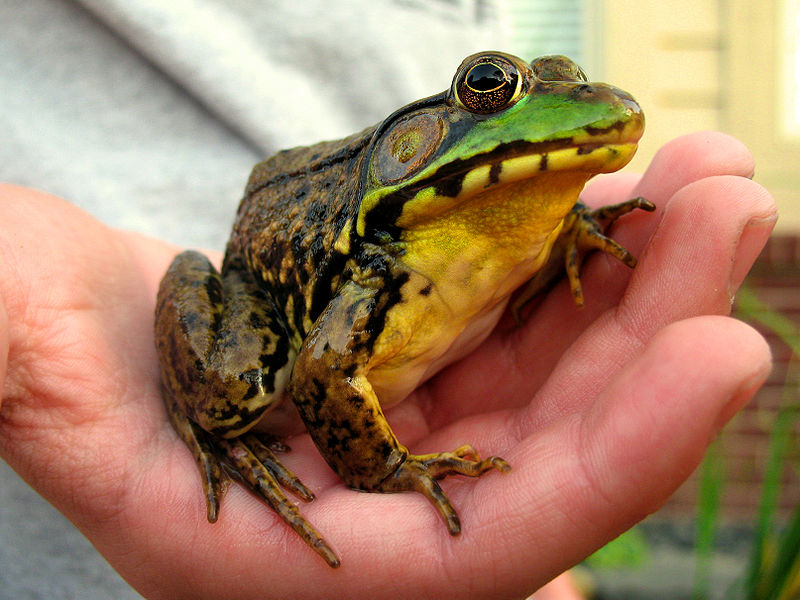
Green Frogs (Lithobates/Rana clamitans) and their tadpoles are often the first species to be collected by curious children exploring the great outdoors. They make hardy and interesting pets – so much so that experienced herp-keepers, myself included, often make room for a pair in their collections. Overlooking this fascinating frog because it is so common is a big mistake! Today I’d like to provide a short introduction, followed by care and natural history details next time. Read More »
Tag Archives: keeping turtles in ponds
Feed SubscriptionA Survey of Amphibians, Reptiles and Insects Suitable for Maintenance in Outdoor Ponds – Part II, The Red-Eared Slider, Chrysemys scripta elegans
During our last look at outdoor ponds I discussed an ideal amphibian inhabitant, the American bullfrog. Today I’ll introduce a reptile that is equally at home outdoors, the red-eared slider.
A Better Outdoor Than Indoor Pet
 The Red-Eared Slider is the world’s most popular pet turtle. The small green hatchlings were previously sold by the millions throughout the USA, but government restrictions have now limited the availability of animals under 4 inches in length (pending legislation may change that situation in the future).
The Red-Eared Slider is the world’s most popular pet turtle. The small green hatchlings were previously sold by the millions throughout the USA, but government restrictions have now limited the availability of animals under 4 inches in length (pending legislation may change that situation in the future).
However, sliders are not well suited to indoor aquariums, as they are very active and females can reach a shell length of 12 inches or so. A turtle of that size needs a tank of at least 55-75 gallon capacity, along with a very powerful filter to maintain water quality. Even in aquariums of that size, however, these vigorous turtles are cramped.
Sunlight and Diet
Sliders make interesting, attractive inhabitants of garden pools if given enough space and easy access to sunny basking spots. Like most turtles, they require unfiltered sunlight in order to form the vitamin D that is necessary to process calcium and build strong shells (exceptions to this rule are certain largely aquatic, non-basking species, such as snapping turtles, musk turtles, and soft-shelled turtles).
Red-eared sliders will readily consume Repto-min, earthworms, crickets, mealworms, prawn and canned insects, and will do their best to catch small fishes and tadpoles. They usually will coexist quite well with larger goldfish and sunfish, if there is ample room for the fish to avoid the turtles. Adults may consume some types of pond vegetation, but if provided with romaine, dandelion, kale and other greens, they will often leave ornamental plants alone.
Other Turtles
Other turtles of similar habits that do well in outdoor ponds are the Eastern painted turtle, Chrysemys picta picta (and subspecies, such as the Midland, Western and Southern painted turtles) and the various Map Turtles, Graptemys spp. The largely aquatic musk turtle, Sternotherus odoratus, does well even in quite small pools.
Enclosing the Pond
 Semi-aquatic turtles often remain near their pond, even if it is unfenced, but males may move away in search of females during the breeding season, and gravid females will seek out suitable nesting areas. Bear in mind also that raccoons are very adept at preying upon even quite large turtles.
Semi-aquatic turtles often remain near their pond, even if it is unfenced, but males may move away in search of females during the breeding season, and gravid females will seek out suitable nesting areas. Bear in mind also that raccoons are very adept at preying upon even quite large turtles.
Useful information on constructing and maintaining an outdoor turtle pond is posted at:
http://www.tortoise.org/general/pondmak.html
 That Reptile Blog – Reptile, Amphibian and Exotic Pet Care and Information
That Reptile Blog – Reptile, Amphibian and Exotic Pet Care and Information
